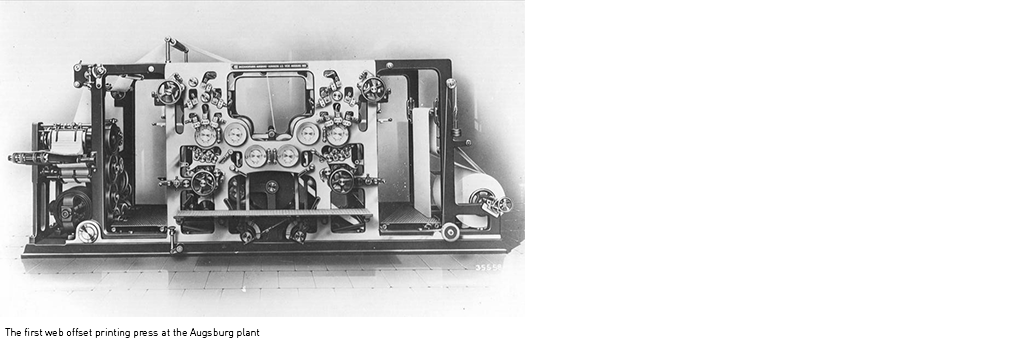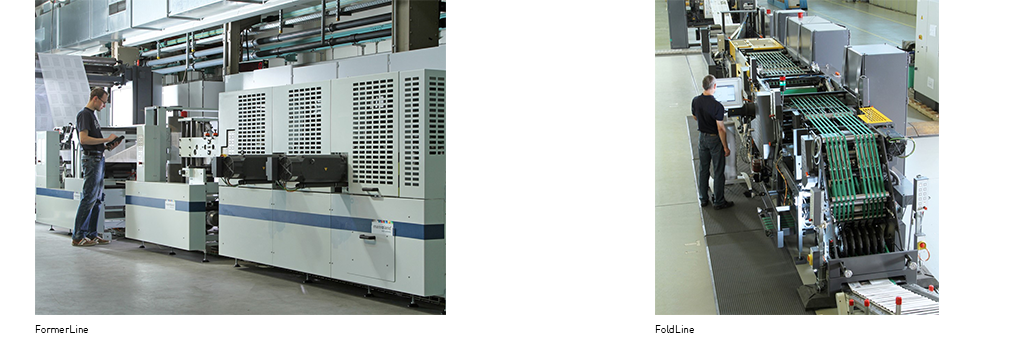Printing process
The four most important printing processes for manroland Goss
The printing industry is subject to constant change – and manroland Goss continues to develop with it. Just as our company and printing technology have changed since 1840 (read more in the history), so have printing processes.
What began with letterpress and rotogravure printing has been continued with offset and digital printing.
The letterpress
(the process was discontinued by manroland Goss since the 1980s)
Letterpress printing is the oldest printing process. The printing parts are higher than the non-printing spaces. The raised form is inked by the ink roller before printing. Halftones are formed by screen dots of different sizes
The rotogravure printing
(the process was discontinued by manroland Goss since the 1980s)
This includes all printing processes where the areas to be printed are lower than the printing plate. Copper and steel engraving, etching, engraving and above all photomechanical halftone gravure are all part of this process.
In rotogravure printing, text and image are etched or engraved in cells of varying depth on a copper cylinder. The cylinder rotates in an ink trough; the excess ink is then wiped off the surface with a sharp knife (squeegee). The ink remaining in the recessed areas is "pulled out" during the printing process.
The offset printing
Offset printing is based on the former planographic printing process, which works on the principle of repulsion of grease and water: Printing and non-printing areas are on the same level. The non-image areas of the ink carrier are chemically pre-treated so that after moistening the stone slab, the ink only adheres to the greasy, untreated areas and can be transferred. Inventor of the stone printing (lithography) is Alois Senefelder)
Offset printing was introduced in the USA in 1904 and is the modern form of planographic printing.
Today it is the most widespread and important printing process, which works as follows:
The printing plate is exposed onto a light-sensitive metal foil. After photographic development, only the non-printing parts take on water, whereas the water-repellent printing parts only take on the greasy ink. During the printing process, this ink is transferred to the paper via a rubber blanket cylinder – the printing is thus indirect.

Offset printing has two types of machines: The sheet-fed offset and the web offset printing machines. The difference between these printing presses is the way the substrates are fed in.
While in sheet-fed offset, individual printed sheets pass through the machine one after the other, in web offset only a single roll of paper with infinity function is used.
The digital printing
Digital imaging technology opens up new ways of rational print production. Digital changeover or digital job changeover brings the advantage of direct imaging without printing plates: "computer to press".
The costly and time-consuming exchange of the printing plate is no longer necessary; to delete the previous job, the rotating impression cylinders are cleaned for renewed imaging and labeling. Directly from the data set, the now bare impression cylinder is provided with a new printing form by laser-induced thermal transfer, using a ribbon with a polymer coating as transfer medium.

